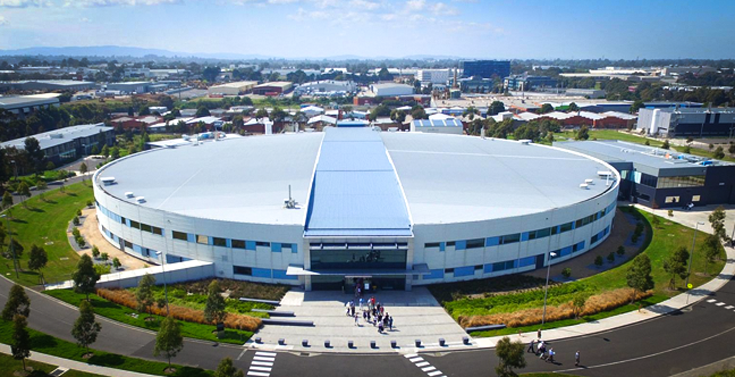Special Seminar: Donavan Marney | Industry Support and Outreach Scientist at The Australian Synchrotron
Donavan Marney
Industry Support and Outreach Scientist | Australian Synchrotron
Abstract
After ten years of operation, the Australian Synchrotron (AS) has proven itself to be a world-class resource for cutting edge science and technology.
While almost all the disciplines spanning the physical and biological sciences have benefited from access to the AS, the mining, agricultural, biomedical and cultural heritage areas of interest have seen some of the most noteworthy achievements.
The experience of the AS in translating research across this broad range of disciplines will be shared. In particular, some successful case studies demonstrating the impact of AS research for industry will be shared.
Manufacturing and heavy industry
- Mineral processing: improvement in efficiency with better understanding of the distribution and speciation of elemental and organic components in ore feedstock (XFM,
XAS, IRM). - Fouling processes: mitigation through better understanding of processes such as pipe scaling in chemical processing, with in-situ ‘real time’ studies of miniaturized pilot plants and reactors (PD, SAXS).
- Environmental monitoring: accreditation of the sensitivity and specificity of existing monitoring techniques, with the ability to analyse metal and organic particulates down to 10 microns in size (XFM, IRM).
- Waste materials transformation: with better understanding of the nanostructure and chemistry, we can help in the development of ways of converting waste materials – such as rubber or fly ash – into valuable feedstocks (SAXS, IRM).
- Mass production: improvement of processes – such as polymer moulding, spinning and extrusion – with better understanding of the nanostructure of the formed products (SAXS).
- High-tech product development: implantable medical devices, for example, rely on a deep understanding of their constituent materials, in addition to high resolution in-situ imaging MBL/MX).
Advanced materials
- Superior alloys: by mapping chemical speciation or elemental composition, development of alloys more resistant to corrosion or structural failure can be accelerated (XFM).
- Electronic device fabrication: new devices are made possible through better understanding of impurities in substrate materials (eg. photo-voltaic cells and chemical sensors), and the morphology of surface structures (XFM and SAXS).
- Industrial catalysts: understanding the nearest neighbour environment of active metal sites is key to understanding how the function of these materials can be improved (XAS).
- Protective coatings: paints and polymers usually require accelerated aging tests – the validity of these tests can be explored by comparing the surface and bulk nanochemistry of a coating product (SAXS and IRM).
Date:
4 June 2018
Time:
2.00pm - 3.00pm
Location:
The Advanced Manufacturing Precinct || Building 55 ||
Level 3 | Room 3 || RMIT University | Melbourne City campus
[58 Cardigan Street, Carlton]
Categories
